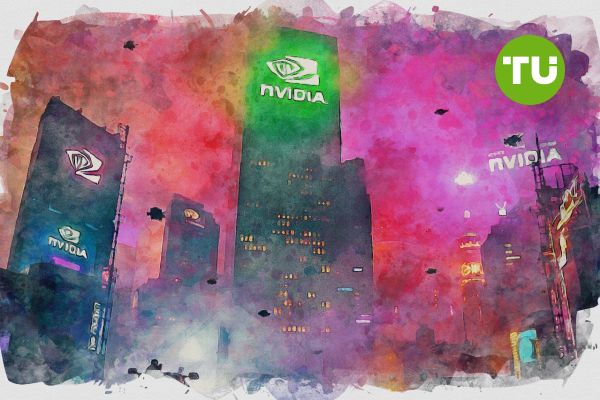Nvidia stock rises 2% as buyers test resistance amid export headwinds
 Investors remain cautious over the possibility of near-term oversupply
Investors remain cautious over the possibility of near-term oversupply
Nvidia (NASDAQ: NVDA) is showing signs of stabilization following a volatile start to 2025. The stock is now trading at $98.89, up 2% in the last 24 hours.
This minor rebound comes after testing key technical support at $96, suggesting some buying interest at lower levels. Despite this short-term uptick, Nvidia continues to trade well below its 200-day moving average around $130, indicating that the broader downtrend remains intact.
The chart still exhibits a falling wedge pattern—a setup often viewed as a potential bullish reversal if confirmed with a breakout above resistance. For Nvidia, the upper trendline of this wedge lies near the $110 mark, a level that could act as the immediate barrier to further gains. A sustained break above this line, particularly on increased volume, could target the 200-day moving average at $130 next.
NVDA stock price dynamics (February 2025 - April 2025). Source: TradingView.
Support remains firm at $96, with $76 as the secondary downside level should selling pressure resume. RSI has ticked higher with the recent bounce but remains below 50, suggesting that momentum is improving, but not yet strong. The MACD histogram shows flattening negative momentum, a sign that bearish pressure may be easing, though a bullish crossover has yet to emerge.
Regulatory overhang and AI demand divergence
The bounce to $98.89 comes against a backdrop of continued uncertainty around Nvidia’s export potential to China. The U.S. government’s restrictions on high-end AI chip exports—including the H20 series—have already resulted in a $5.5 billion charge on Nvidia’s books. With China representing over $17 billion in revenue in FY2025, the restrictions pose a clear revenue headwind.
Wall Street analysts estimate the export limitations could lower fiscal 2026 revenues by 5% to 8% and earnings per share by 6% to 10%. This has tempered enthusiasm, particularly among growth investors who previously bid up Nvidia on the back of exponential AI demand.
At the same time, Nvidia is not without bullish drivers. Its next-generation Blackwell chips are reportedly seeing strong demand from hyperscale customers. Major tech players such as Microsoft, Google, and Amazon continue to scale AI infrastructure, with Nvidia at the core of that expansion. However, investors remain cautious over the possibility of near-term oversupply, especially if global macroeconomic conditions deteriorate or AI monetization falls short of expectations.
Consolidation likely before directional breakout
With the bounce to $98.89, Nvidia appears to be entering a consolidation phase within the $96–$110 range. A decisive move above $110 would likely confirm the end of the falling wedge pattern and pave the way for a retest of the 200-day moving average near $130. This scenario requires supportive macro conditions and easing in regulatory headwinds—two factors that currently remain in flux.
On the downside, any rejection from $100–$110 levels could prompt renewed selling, especially if broader tech indices falter. Should $96 break decisively, a slide toward $76 cannot be ruled out.
Nvidia’s recent stock decline stems not just from technical weakness but also from escalating U.S. export restrictions on AI chips to China. The new licensing rules effectively halt shipments of advanced H20 GPUs, impacting a market that contributed up to 20% of Nvidia’s recent data center revenue.













































































































































